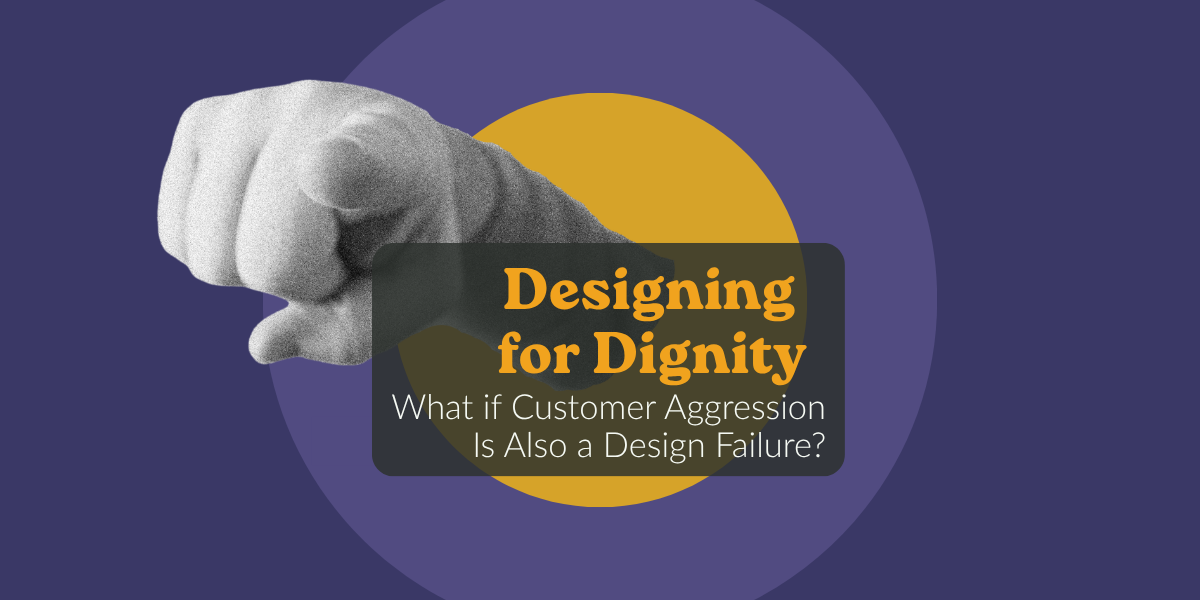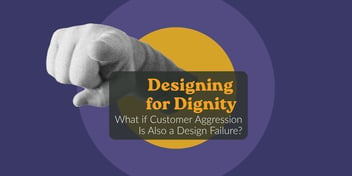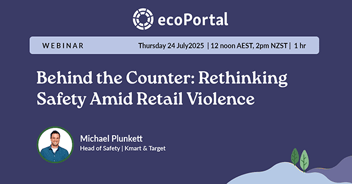You’ve likely been there.
The queue twists through a busy bank branch. You’ve been standing for what feels like an eternity. The screen above the teller windows flashes numbers that make little sense, no staff member is visible to help, and you’re left wondering if you’re even in the right line. Behind you, sighs grow louder. Someone mutters, then raises their voice. A teller shifts, unsure how to respond.
It’s a scene that plays out in crowded bank branches, customer service centres, and retail stores, places designed to serve but often leaving people frustrated, anxious, and sometimes aggressive.
When tempers flare, the instinct is to blame the person who snapped. To label them impatient or rude. But what if this anger is not only the failure of individuals? What if it is the predictable, even inevitable, result of design choices made long before anyone entered that space?
Want to dive deeper into how retail leaders can tackle customer aggression? Check out our webinar, Behind the Counter: Rethinking Safety Amid Retail Violence.
Get fresh H&S insights weekly
How the Environment Can Trigger Customer Aggression
Aggression does not emerge from nowhere. It is a response shaped by context. Every unclear sign, every complicated digital form, every moment of waiting without explanation adds to a silent pressure cooker.
Physical, digital, and procedural design create that context. When physical spaces are confusing or unwelcoming, or when digital systems fail to acknowledge human emotions and needs, tension builds. The more a system feels like it is working against individuals, the less patience anyone has for the process or the employees.
We often forget this is how environments speak to us. Sometimes what looks like poor behaviour is simply the response to an experience that feels frustrating, unfair, or dehumanising.
The Architecture of Frustration: Real-World Examples
Imagine a busy retail store during a major sale. Bright signs advertise discounts, but the fine print is confusing or missing altogether. Customers move from aisle to aisle, unsure which deals apply or whether the sale includes certain products. Checkout lines grow longer, but there is no clear signage to guide people where to queue. Staff are stretched thin, unable to provide the guidance or reassurance people desperately need.
Or consider a bank where a customer is trying to apply for a loan. The paperwork is complicated, and the digital portal offers little explanation when errors arise. The customer receives vague messages like “application incomplete” but no clear direction on what needs fixing. Phone menus are long and confusing, and no one is available to walk the customer through the process. The uncertainty about the loan status, combined with poor communication, creates mounting stress that can quickly turn into frustration.
These examples are more than just logistical challenges. They shape the emotional experience of every person navigating those spaces.
These frustrations are not just anecdotal. Research in cognitive science explains why this happens. Uncertainty acts like stress. When people do not understand how long a process will take, why delays happen, or what they need to do next, their brains switch from cooperation to a threat response. The mental effort required to figure out unclear systems only deepens frustration.
That frustration becomes the seedbed for aggression. When confusion and silence chip away at dignity, even the calmest person can reach their breaking point.
What Does Fairness Look Like for Customers?
The key difference is often perceived fairness. People are far more willing to accept delays and complications when they understand the process and feel it is just.
Think back to your own experience in a store or bank. Waiting in line feels easier when you can see progress. Clear explanations help, even when the news is disappointing. Feeling heard through a quick explanation or a simple acknowledgment changes everything.
Too many systems, however, leave people guessing. The result is not just impatience but distrust. That distrust can quickly morph into hostility.
Designing for People
What if we looked at these moments of tension not as behaviour problems but as design opportunities?
Reducing customer aggression does not start with enforcement. It starts with understanding. One of the most effective ways to do that is by tracing the actual experience of the people who use your services.
Journey mapping is a simple but powerful method. It involves walking through the steps a customer takes, from first contact to final outcome, and identifying where tension builds, where clarity drops off, and where frustration starts to turn into something more dangerous. These are your pressure points. They are not always where you expect.
Often, it’s not the big, dramatic failures that cause people to lose patience, but the slow build-up of confusion. It’s not knowing if your application has gone through. It’s clicking “submit” and receiving nothing back. It’s waiting on hold without a sense of how long it will take or whether you are even in the queue.
By mapping pain points, organisations can begin to design out unnecessary stress. Not with generic reminders to be kind, but with systems that feel clear, responsive, and fair.
Beyond the Storefront: What About Your Safety Systems?
The story does not end with your customer’s experience.
Safety software and reporting systems are part of the ecosystem shaping how organisations understand and respond to aggression.
Ask yourself, do your tools encourage or discourage incident reporting? Are they simple enough for busy staff to use without adding to their burden? Or do they create invisible barriers that leave aggression underreported and misunderstood?
Without accurate data, it can be difficult to fully understand the extent and nature of customer aggression within your business.
Ask yourself, how are you meant to combat customer aggression without knowing it is happening?
Safety as Experience, Not Enforcement
Safety is a lived experience. It is shaped not just by rules but by every interaction, system, and tool.
When organisations design with empathy and clarity, they create environments where dignity is the default. Frustration fades because uncertainty lessens. Staff feel supported because systems work alongside them.
This is safety beyond enforcement. It is safely designed into the fabric of everyday service.
A Call to Rethink How We See Aggression
Customer aggression is rarely a simple issue of poor behaviour. It is a symptom of systems that can be better designed.
The challenge is to listen deeply, not just to moments of conflict, but to the experiences that lead there. To look inward at physical spaces, processes, and software that shape those experiences.
When dignity is built into design, the outcomes are safer, fairer, and more humane services.




.png?width=352&name=Psychosocial%20Safety%20(2).png)

.png?width=352&name=Rethinking%20Health%20%26%20Safety%20in%20NZ%20(1).png)
.png?width=352&name=Psychosocial%20Safety%20(5).png)
